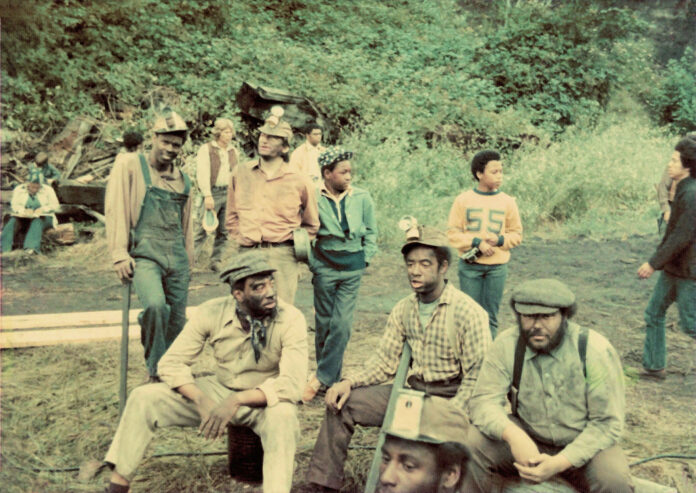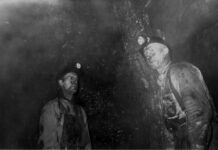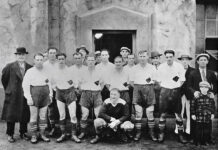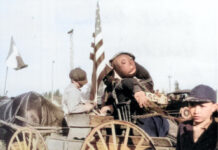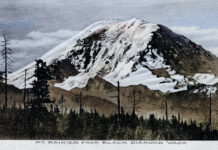The newspaper headline read, “In movie math, 13 hours = 40 seconds.” Fifty years ago this month, actors, props, cameras, and recording equipment came to Palmer Coking Coal Company’s mine yard to shoot scenes for a television series produced by Washington State University and funded by a grant from the federal Department of Health, Education, and Welfare. The project was titled “South by Northwest: Blacks in the Pacific Northwest,” whose goal was to highlight the role played by Black miners in the development of Washington’s coal mine industry.
During four days of filming from July 28-31, 1975, the crew started work each morning at 7 a.m., and struggled through rehearsals, delays, breakdowns, and the actual shooting, staggering away each evening at 8 p.m. The efforts of the 13-hour days occasionally produced a few exciting 15- and 20-second segments that the producers hope will one day be seen on television.
At the time, Palmer Coking Coal (PCC) was still operating the last underground coal mine in Washington. When Rogers No. 3 in Ravensdale was blasted shut at 2:30 p.m. on December 17, 1975, the explosion marked the end of a significant chapter in the state’s history. Though actual filming took place at PCC’s Mine 11 preparation plant in Black Diamond, where raw coal from the mine was washed and sent to market.
During one of the early chapters of Washington state coal history, some mine owners recruited Black miners from the Midwest to break strikes by Whites in the Knights of Labor union. The first attempt happened in Roslyn, whose workers were seeking an eight-hour day. The Northern Pacific Coal Company, a subsidiary of Northern Pacific Railway (N.P.), whose locomotives were fueled by coal, refused the miners’ demands, so the union called a strike on Aug. 17, 1888. Trying to break the strike, the company recruited 50 Black miners shielded by 40 heavily armed security guards. The Black strikebreakers arrived on N.P. trains.
A year before statehood, the Territorial Governor, Eugene Semple, visited Roslyn to investigate the situation. He found the people of Roslyn to be “law-abiding and intelligent” and called the security force “a serious menace to our free institution.” Semple persuaded the company to back away from their strong-arm tactics, but didn’t step into the labor dispute. The Black miners remained, and were joined by others, eventually comprising 22% of Roslyn’s 1900 population. Black miners joined various European immigrants by working side by side in and around the mines.
Years later, Roslyn boasted the very first Black mayor in Washington State, William Amos ‘Will’ Craven, who assumed the post in 1975, serving until 1979. Will Craven was born in 1938, and the grandson of one of those Black miners brought in to break a strike, but who ended up staying to build the community. Craven passed away last month, on June 25, 2025, at the age of 86.
This photo comes courtesy of Carl Falk, PCC’s office manager at the time. Falk had a bit part driving Penny, his own Morgan horse, who pulled a buggy in one scene of the series. Some story details were adapted from newspaper articles published in the “Now” magazine, from the Sunday, Aug. 3, 1975 issues of the Auburn Globe-News, Renton Record Chronicle, and Kent News Journal. Photo enhancements were undertaken by Boomer Burnham, doing business as http://www.boomersphotography.com/ Next week, more about the film documentary series, “South by Northwest: Blacks in the Pacific Northwest,” produced by KWSU of Washington State University.

